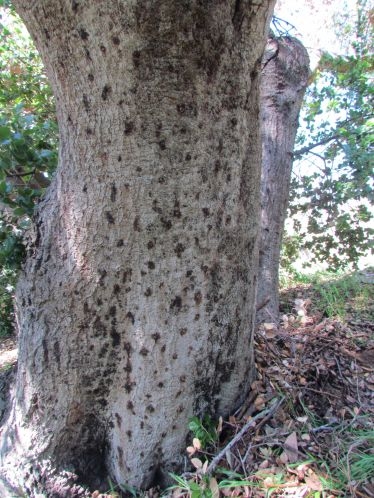
“We have found declining coast live oak trees throughout urban landscapes in Los Angeles, Orange, Riverside, Santa Barbara, Ventura and Monterey counties,” said Akif Eskalen, UC Cooperative Extension specialist in the Department of Plant Pathology and Microbiology at the University of California, Riverside.
Eskalen recovered the fungal species, Geosmithia pallida, from tissues of infected coast live oak trees and performed pathogenicity tests on it in his laboratory at UC Riverside. The tests showed that the fungus is pathogenic to coast live oak seedlings and produces symptoms of foamy canker.
The western oak bark beetle, which spreads the fungus, is a small beetle — about 2 millimeters long — that burrows through the bark of the coast live oak tree, excavating shallow tunnels under the bark across the grain of wood. Brown in color, this beetle is native to California. Female beetles lay their eggs in the tunnels. It is not known at this time if the beetle infects trees other than coast live oak trees.
Symptoms of foamy bark canker disease include wet discoloration on the trunk and main branches of the infected coast live oak tree. This discoloration surrounds the entry holes that the western oak bark beetle makes to burrow into the tree. Multiple holes can often be seen on an infected tree.
“When you peel back the outer bark of the infected area, you see bark (phloem) necrosis surrounding the entry hole,” Eskalen said. “As the disease advances, a reddish sap may be seen oozing from the entry hole, followed by a prolific foamy liquid. This foamy liquid, the cause of which remains unknown, may run as far as two feet down the trunk.”
Eskalen explained that when the infection is at an advanced stage, the coast live oak tree dies. Currently, no control methods are in place to control the fungus or the beetle.
If you suspect your coast live oak tree has the symptoms described above, please contact your local UC Cooperative Extension advisor, pest control adviser, county agricultural commissioner's office or Eskalen at akif.eskalen@ucr.edu.
To see more photos, visit http://ucrtoday.ucr.edu/22096.